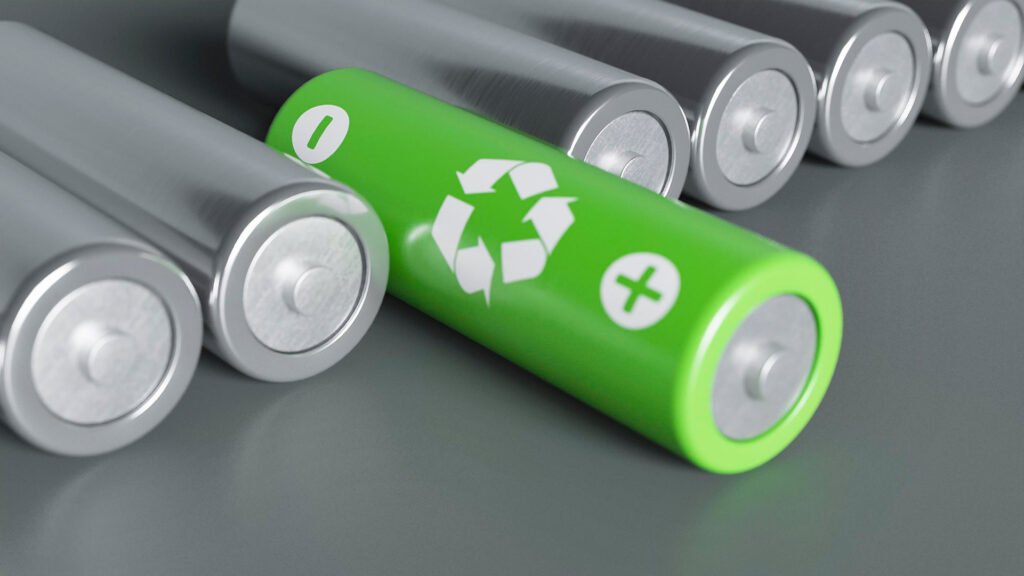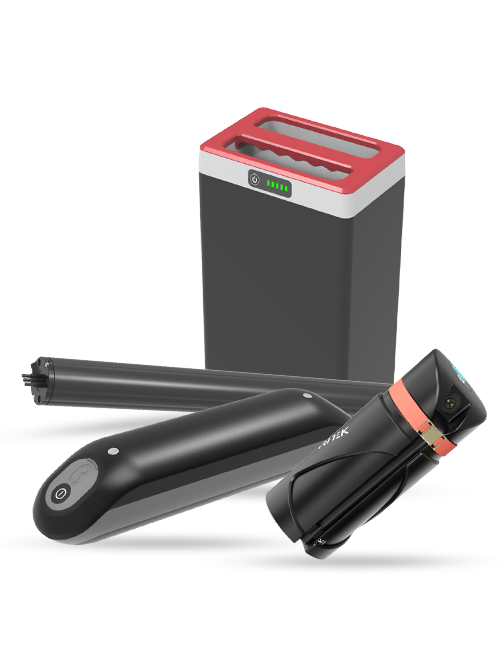In today’s world, where energy consumption and efficient power usage are paramount, understanding basic electrical terms like volts, amps, amp-hours, watts, and watt-hours is essential.
Whether you’re managing battery capacity for a solar panel system, calculating the energy usage of an electric motor, or simply trying to figure out how much battery power you need for a device, these terms are crucial.
This article will break down these concepts, helping you navigate the world of electrical power with confidence.

What is Voltage (Volts)?
Voltage, measured in volts (V), is the electrical potential difference between two points. Think of it as the “pressure” that pushes electric charge through a circuit. Higher voltage means more potential energy, which can lead to more power being delivered to a device.
Real-World Examples:
- Household Outlets: In the U.S., standard outlets provide 120V, while in many other countries, 240V is common.
- Batteries: A typical AA battery has 1.5V, while a car battery usually has 12V.
Why Voltage Matters:
- Device Compatibility: Devices are designed to operate at specific voltages. Using a higher voltage than recommended can damage the device.
- Power Transmission: Higher voltages are used in power lines to reduce energy loss over long distances.
Connecting two batteries in series increases the total voltage, which can be useful in applications that require higher voltage. However, increasing voltage without considering the battery’s energy capacity can lead to inefficient power usage and reduced battery life.
What is Current (Amps)?
Current, measured in amperes or amps (A), is the flow of electric charge through a conductor. Think of it as the “flow rate” of electricity, similar to how water flows through a pipe. The higher the current, the more electricity is moving through the circuit.
Real-World Examples:
- Light Bulbs: A standard LED bulb might draw around 0.5A, while an incandescent bulb could draw 1A or more.
- Electric Vehicles: An EV charger might draw 30A or higher to charge the battery quickly.
Why Current Matters:
- Device Requirements: Devices are designed to handle specific current levels. Exceeding this can cause overheating or damage.
- Circuit Design: Wires and fuses are rated for specific currents. Using a wire that can’t handle the required current can lead to dangerous situations like fires.
This relationship is expressed by the formula: Power (W) = Voltage (V) × Current (A).
For example, a 120V device drawing 2A consumes 240W of power.
Understanding Amp-hours (Ah)
Amp-hours (Ah) measure a battery’s capacity, indicating how much current it can supply over time. It’s like the size of a fuel tank—the larger the Ah rating, the longer the battery can power a device.
Real-World Examples:
- Smartphone Battery: A typical smartphone battery might have a capacity of 3,000mAh (or 3Ah), meaning it can supply 3A for one hour or 1A for three hours.
- Car Battery: A car battery might have a capacity of 50Ah, allowing it to supply 5A for 10 hours or 10A for 5 hours.
Why Amp-hours Matter:
- Battery Life: Knowing the Ah rating helps you estimate how long a battery will last. For example, a 100Ah battery powering a 10A device will last approximately 10 hours.
- System Design: When designing solar systems or backup power systems, Ah ratings help you choose the right battery size for your needs.
Conversion Tip:
- To convert amp-hours to watt-hours (Wh), multiply the Ah rating by the battery voltage. For example, a 12V battery with 100Ah capacity stores 1,200Wh of energy.
What is Watts (W)?
Watts (W) measure the rate of energy consumption or generation. It’s the “speed” at which energy is used or produced. Understanding watts helps you determine how much power a device needs or how much energy a system can generate.
Real-World Examples:
- Household Appliances: A microwave might use 1,000W, while a laptop charger might use 65W.
- Solar Panels: A solar panel might generate 300W under ideal conditions.
Why Watts Matter:
- Energy Efficiency: Devices with lower wattage consume less energy, saving you money on electricity bills.
- Power Supply: When selecting a power supply or generator, you need to ensure it can handle the total wattage of all connected devices.
Formula Connection:
- Watts are calculated using:
Power (W)=Voltage (V)×Current (A)Power (W)=Voltage (V)×Current (A).
For example, a 12V device drawing 5A consumes 60W.
Understanding Watt-hours (Wh)
Watt-hours (Wh) measure the total energy consumed or stored over time. It’s like the total amount of fuel used during a trip. This unit is especially useful for comparing the energy capacity of batteries or calculating energy usage.
Real-World Examples:
- Battery Packs: A portable power station might have a capacity of 500Wh, meaning it can supply 500W for one hour or 250W for two hours.
- Electricity Bills: Your monthly energy consumption is often measured in kilowatt-hours (kWh). For example, using a 1,000W appliance for one hour consumes 1kWh.
Why Watt-hours Matter:
- Energy Storage: Wh ratings help you compare batteries with different voltages. For example, a 12V 100Ah battery (1,200Wh) stores more energy than a 24V 50Ah battery (also 1,200Wh).
- Energy Usage: Knowing the Wh consumption of a device helps you estimate how long a battery will last. For example, a 100W device running on a 1,000Wh battery will last 10 hours.
Conversion Tip:
- Converting watt-hours to amp-hours, divide the Wh rating by the battery voltage. For example, a 1,200Wh battery at 12V has a capacity of 100Ah.
Conclusion
In conclusion, volts, amps, amp-hours, watts, and watt-hours are fundamental concepts in understanding electrical systems and battery capacity. By mastering these terms, you can better manage energy consumption, select the right batteries for your needs, and optimize the performance of your electrical systems. Whether you’re comparing batteries, calculating energy usage, or designing a power system, this knowledge will empower you to make informed decisions and ensure that your devices and systems operate efficiently.
Key Takeaways:
- Voltage (V): The “pressure” that pushes electricity through a circuit.
- Current (A): The “flow rate” of electricity.
- Amp-hours (Ah): A measure of battery capacity.
- Watts (W): The rate of energy consumption or generation.
- Watt-hours (Wh): The total energy consumed or stored over time.
Ready to Power Your Projects with Reliable Battery Solutions?
At Tritek Battery, we specialize in high-performance lithium batteries designed for a wide range of applications, from solar energy systems to electric vehicles. Our cutting-edge technology ensures superior energy density, longer lifespan, and eco-friendly performance.
Contact us today to explore our innovative battery solutions and find the perfect power source for your needs. Let us help you optimize your energy systems and achieve greater efficiency!
FAQ
How do lithium batteries compare to other types of batteries in terms of watt-hours and amp-hours?
Lithium batteries generally offer higher energy density, meaning they can store more energy in watt-hours and amp-hours compared to other types of batteries of the same size. This makes them ideal for applications where space and weight are important factors, such as in electric vehicles and portable electronics.
How can I perform amp-hour calculations for my battery?
To calculate amp-hours (Ah) for your battery, multiply the current (in amps) by the time (in hours) the battery can provide that current. For example, if a battery supplies 5 amps for 10 hours, it has a capacity of 50Ah. These amp-hour calculations help you estimate how long your battery will last under a given load.
How do I convert watt-hours to amp-hours?
To convert watt-hours (Wh) to amp-hours (Ah), divide the watt-hour rating by the battery voltage (V). For instance, a 1,200Wh battery with a voltage of 12V has a capacity of 100Ah. This conversion is useful for understanding how much energy your battery can store.
How many watts does a device consume over a one-hour period?
The number of watts a device consumes over a one-hour period is equal to its power rating in watts (W). For example, a device with a power rating of 100W will consume 100 watt-hours of energy if operated continuously for one hour. This is crucial when calculating energy usage and battery life.
How many watt-hours does a lithium battery typically have?
The number of watt-hours in a lithium battery depends on its amp-hour rating and voltage. To determine how many watt-hours a lithium battery has, multiply its amp-hour (Ah) rating by its voltage (V). For example, a 10Ah lithium battery with a voltage of 12V has 120Wh of stored energy, making it suitable for high-energy applications.



